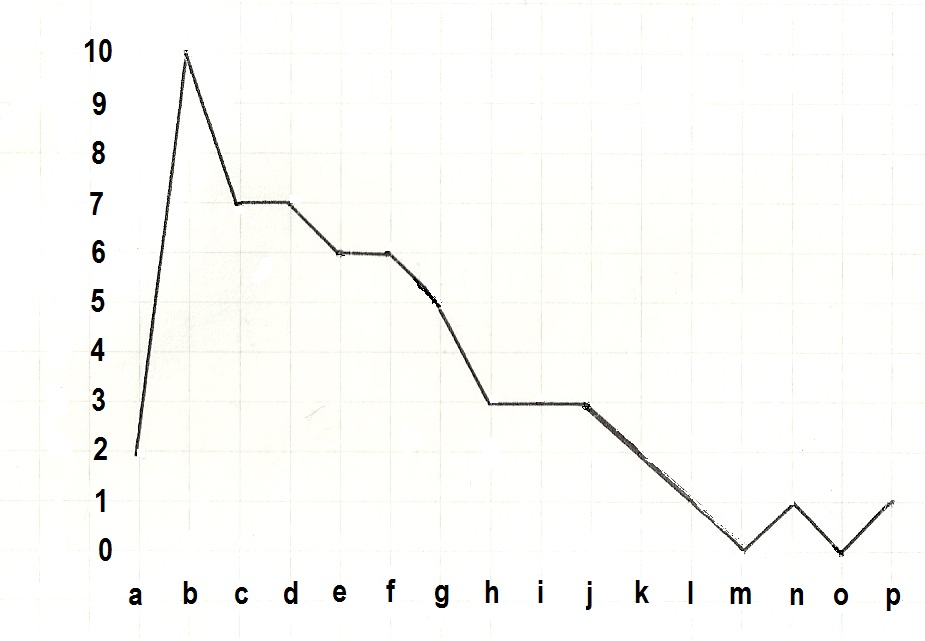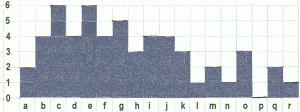No hoax or combination of hoaxes played any significant part in ninety-eight eyewitness accounts of apparent pterosaurs. Those reports came from decades of records, taken mostly from my own interviews and accounts given to me directly from eyewitnesses. A minority of those ninety-eight were taken from nonfiction books (like cryptozoology books), newspaper accounts, and online reports. One key to eliminating any hoax possibility comes from fifty-seven of those reports, the ones in which an eyewitness gave an estimate of the wingspan.
In the above graph, the verticle indicates the number of sightings within a particular range of wingspans. The letters indicate those wingspan estimates, for example: b=3.25-6.25 ft. (ten sightings) and f=15.25-18.25 ft. (six sightings). Actually, this graph seems to exaggerate the three-foot-to-six-foot range, for twenty-six eyewitness estimates were from 6.25 to 18.25 feet (c, d, e, f). In another graph (below), wingspans are divided in every two feet, showing a less pronounced peak on the left:
In the second graph, the higher elevations around “e” and “f” (8.25 feet to 12.25 feet) demonstrate the honesty of the great majority of these eyewitnesses, for hoaxers would not have inadvertantly caused the high instances of estimates that are too large or too small, according to common ideas about pterosaurs. (And it defies reason to imagine hoaxers, over several decades and from various parts of the world, giving lies about wingspan estimates based on their foresight that some future investigator would analyze the overall estimates in this way.)
If some hoaxers gave “estimates” based on standard beliefs about long-tailed pterosaurs, and some hoaxers gave “estimates” based on standard beliefs about giant pterosaurs, the graph would have shown two peaks, with a deep valley in the top graph around “d,” (“e” and “f” in the lower graph), far different from the actual data collected. The fifty-seven wingspan estimates coorelate very well, however, with the following:
A number of species of modern pterosaurs live in various parts of the world, with smaller ones outnumbering larger ones and the giant ones being rare. Eyewitnesses who estimate wingspans are generally making those estimates with random errors, for many of the sightings involve flying creatures previously unknown to those eyewitnesses, making it difficult to judge distance and size.
Wingspan Estimates Eliminate Hoax
To put it in a nutshell, the fifty-seven wingspan estimates show a fairly smooth curve downwards toward the giant wingspans, and it is far too shallow a curve to have come from hoaxers who would have tried to fool people into thinking that the hoaxers had seen long-tailed pterosaurs. The reason for that is that those Rhamphorhynchoids are commonly believed to have been smaller pterosaurs with wingspans generally less than seven feet. The statistics show something far different.





One Reply to “Hoax Potential – Pterosaur Wingspan”
Comments are closed.